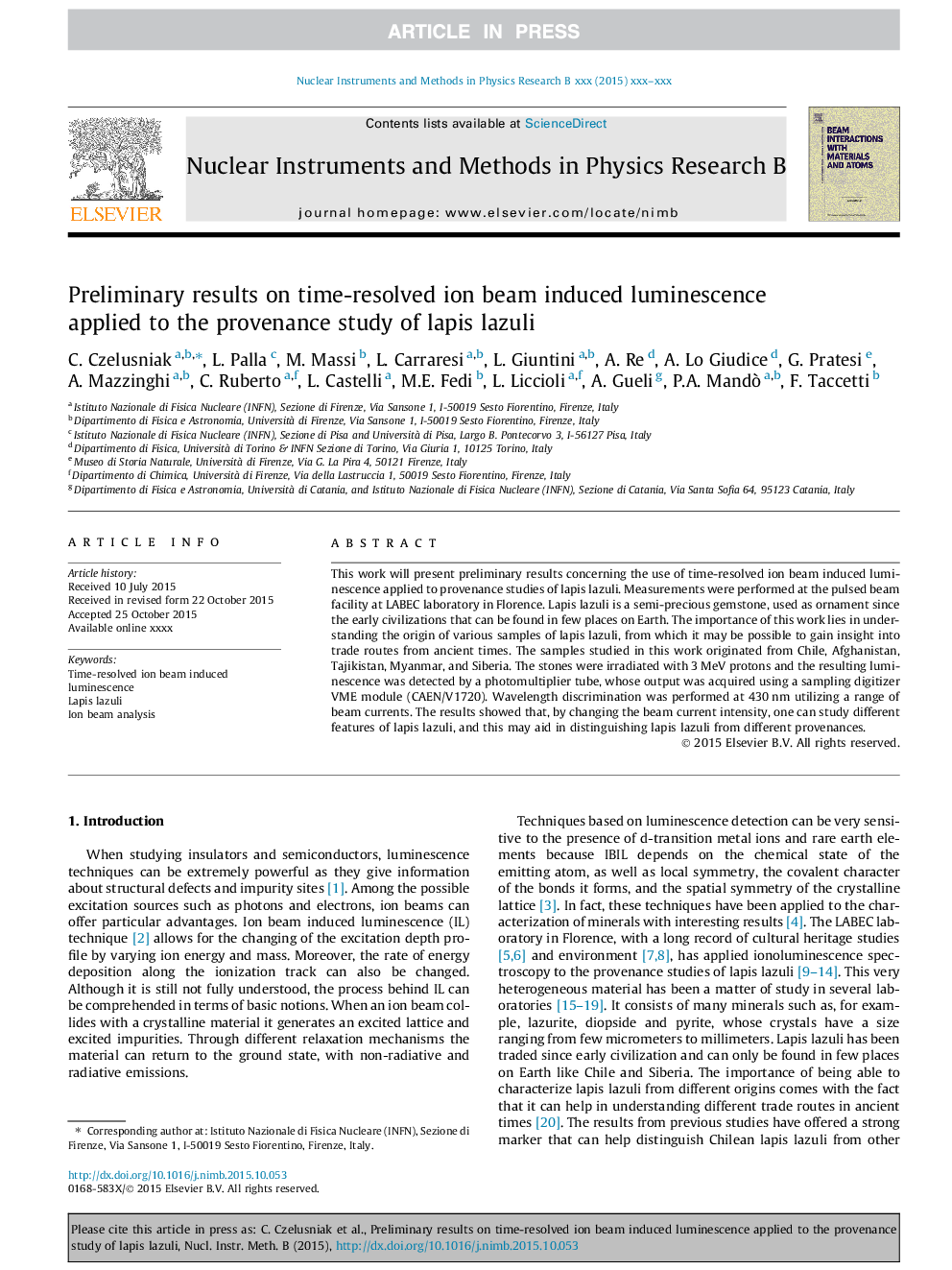| Article ID | Journal | Published Year | Pages | File Type |
|---|---|---|---|---|
| 1681594 | Nuclear Instruments and Methods in Physics Research Section B: Beam Interactions with Materials and Atoms | 2016 | 4 Pages |
Abstract
This work will present preliminary results concerning the use of time-resolved ion beam induced luminescence applied to provenance studies of lapis lazuli. Measurements were performed at the pulsed beam facility at LABEC laboratory in Florence. Lapis lazuli is a semi-precious gemstone, used as ornament since the early civilizations that can be found in few places on Earth. The importance of this work lies in understanding the origin of various samples of lapis lazuli, from which it may be possible to gain insight into trade routes from ancient times. The samples studied in this work originated from Chile, Afghanistan, Tajikistan, Myanmar, and Siberia. The stones were irradiated with 3Â MeV protons and the resulting luminescence was detected by a photomultiplier tube, whose output was acquired using a sampling digitizer VME module (CAEN/V1720). Wavelength discrimination was performed at 430Â nm utilizing a range of beam currents. The results showed that, by changing the beam current intensity, one can study different features of lapis lazuli, and this may aid in distinguishing lapis lazuli from different provenances.
Keywords
Related Topics
Physical Sciences and Engineering
Materials Science
Surfaces, Coatings and Films
Authors
C. Czelusniak, L. Palla, M. Massi, L. Carraresi, L. Giuntini, A. Re, A. Lo Giudice, G. Pratesi, A. Mazzinghi, C. Ruberto, L. Castelli, M.E. Fedi, L. Liccioli, A. Gueli, P.A. Mandò, F. Taccetti,
